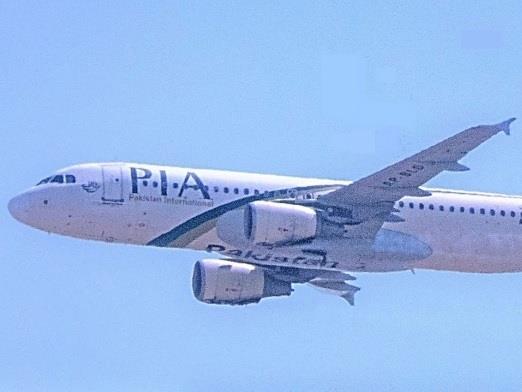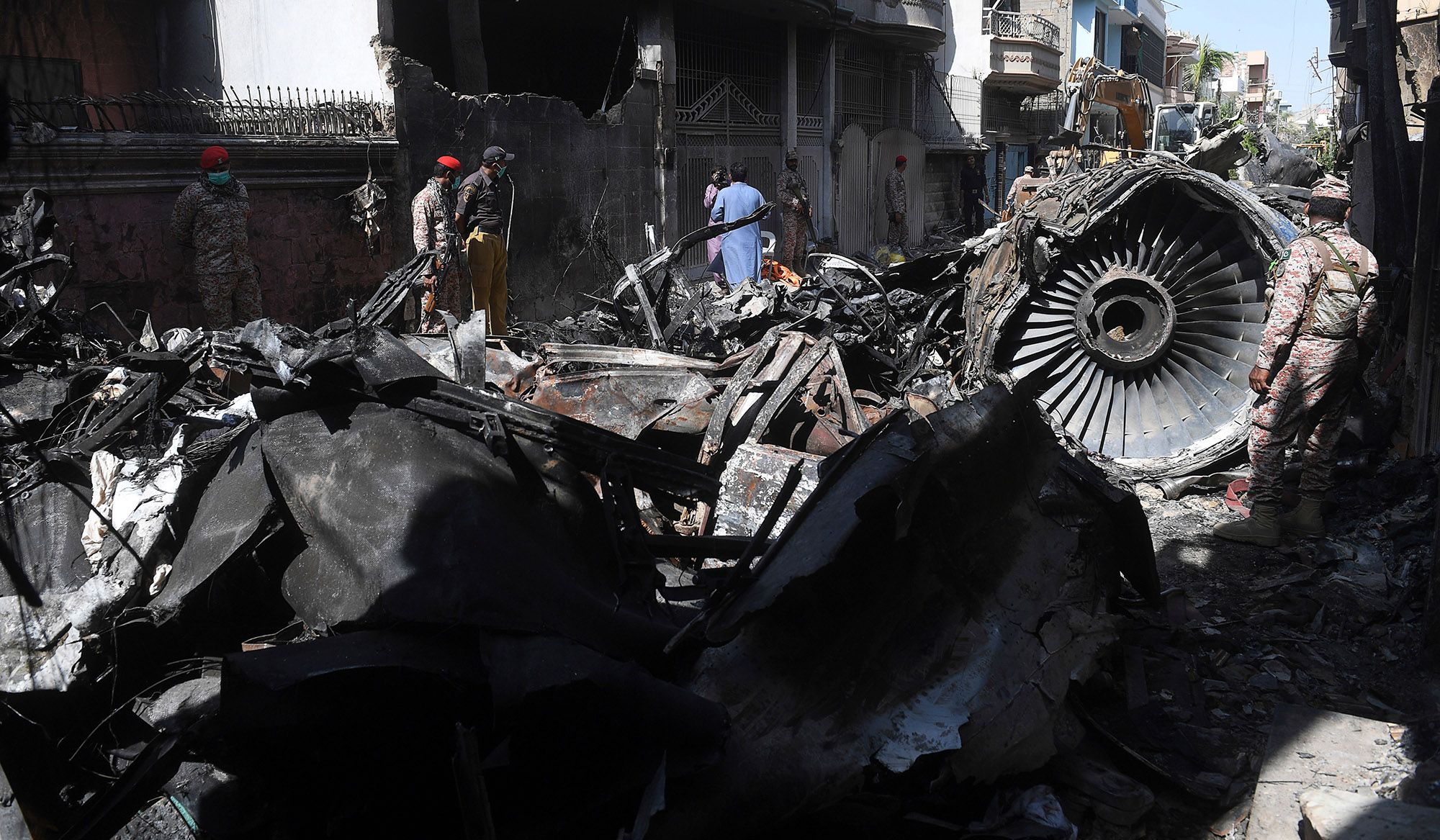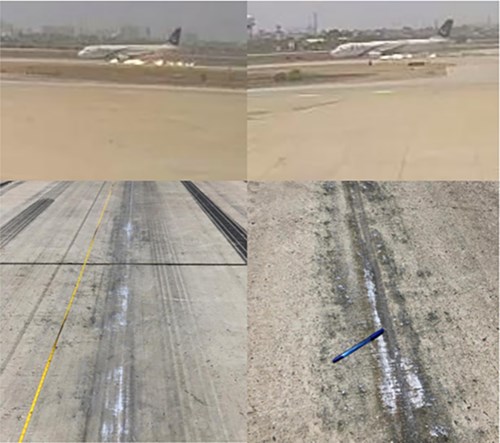22 May 2020 - Pakistan International Airlines Flight 8303
Pakistan International Airlines Flight 8303 was a scheduled domestic flight from Allama Iqbal International Airport in Lahore to Jinnah International Airport in Karachi, Pakistan. On 22 May 2020, the Airbus A320 crashed into Model Colony, a densely populated residential area of Karachi only a few kilometres from the runway, while on a second approach after a failed landing attempt with landing gear not extended. The aircraft was badly damaged in the first belly landing, with both engines flaming out during the go-around. Of the 91 passengers and 8 crew on board the aircraft, 97 were killed, and only two passengers survived with injuries. Eight people on the ground were also injured in the accident, one of whom later succumbed to her injuries.

The flight, piloted by captain Sajjad Gul and first officer Usman Azam, took off from Lahore at 13:05 and was near the end of its 90-minute journey, when it crashed at around 14:45 into the densely-populated neighbourhood of Model Colony around 3 kilometres from the airport. The aircraft's wings were reported as being on fire moments before the plane crashed into the rooftops of the houses and buildings in the area, some of which caught fire. The crash was captured on video by a CCTV camera of a nearby building, which shows the aircraft just before crashing into the neighbourhood.

The aircraft initially made an aborted landing attempt, apparently with the landing gear not extended. One of the pilots subsequently radioed air traffic control (ATC) reporting landing gear issues and the failure of both engines. ATC confirmed to the pilot that he was cleared to use either of the airport's two runways, requesting, "Confirm your attempt on belly?" According to PIA's CEO, Arshad Malik, a technical fault prompted the aircraft to make a go-around rather than land, even though both runways were available. One of the pilots told the controller, "we are returning back, sir, we have lost engines." Twelve seconds later, one of the pilots declared a mayday emergency, which was the final communication with the aircraft.
According to officials from Pakistan's Civil Aviation Authority (CAA), complications had arisen during the aircraft's first descent. The landing gear was still in the retracted position when the aircraft attempted its first landing. Friction marks on the runway suggested there had been some ground contact; at the runway's 1,400-metre (4,500 ft) mark, the plane's left engine is believed to have scraped the runway; at the 1,700-metre (5,500 ft) mark, the right engine made contact. When the pilot went around, it is believed damage had already been caused to both engines from this contact, leading to engine failure after the go-around. This made it impossible for the aircraft to maintain altitude, causing it to crash during its return to the airfield. This is supported by the conversation between the aircraft and air traffic control which indicates that the aircraft was constantly losing altitude. Observers noted that the plane's ram air turbine was deployed, which supplies power to the aeroplane's control systems when both engines have failed and without the auxiliary power unit (APU) running.
DOWNLOAD the final Accident Report


